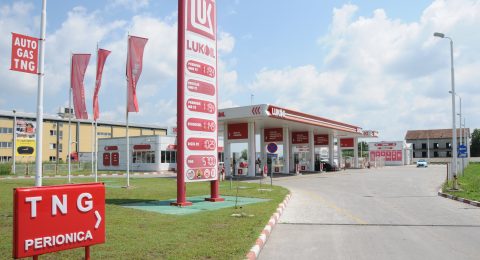In the oil and gas industry, it is hard to produce barrels of oil without water as it exists in both onshore and offshore wells naturally. Due to this, sometimes oil companies have been referred to as water companies within the oil and gas sector. The ratio of produced water to oil varies from one well to another. CNBC reported, in 2017, that for each barrel of oil an average of three to five barrels of water is produced as well.
According to a sheet published by the Water Environment Federation, the amount of water barrels may reach more than 20 barrels in some parts of the world. In a mature field, produced water may reach nine barrels for every barrel of oil. Excessive Water Influence
Excessive water control in wells is a very important issue that should be taken into consideration for new as well as mature oil fields. Excess water affects the performance of the wells’ production and it may shorten the wells’ lifetime. As a result, many fields could be turned into brownfields earlier, despite having the ability to produce more oil.
Amer Hassan, a Senior Reservoir Engineer at IPR Energy Group, told Egypt Oil and Gas (EOG) “Water Production has side effects on the environmental footprint due to harsh oil contaminants and on overall project economics.”
Additionally, it represents an economic challenge for the operators and reduces profitability due to the high costs of water disposal process. According to an article published by the Society of Petroleum Engineers (SPE), water disposal and treatment from oil fields costs more than $40 billion per year because the water produced is accompanied by hydrocarbons. Furthermore, water production leads to corrosions and degradation of the fields.
Noureldien Darhim, New Technology and Unconventional Resources Lead, discussed the quantity and quality of produced water control project commerciality. According to him “Water quantity can restrain project economics due to production loss, and water quality dictates the degree of complexity needed in surface facilities counting on technology advancement especially when it comes to environmental regulations in case of water disposal, for example.”
Water Formation Origins
There are many sources for the undesired water. One of them, which is considered the most arguable issue in the sector, is water injection. During oil production, the water flooding technique is used to push the oil from the matrix rock toward the production well in addition to keep the pressure stability of the reservoir. As the stickiness of water differs from the oil, a great amount of water may permeate into the production well to stop production.
Another cause of water existence is water coning. Water coning happens when the production well is located near to aquifer with the presence of a permeable connection between them. Coning is caused when the pressure drawdown is increased to overcome the gravitational resistance of nearby water.
In addition, poor conditions of the wellbore are another source of unwanted water. It resulted from casing leaks or bad cement jobs behind the casing. These problems are the causes of connection between water sources and the wellbore.
It Can Be Resolved
The optimum method to resolve such a problem can be identified by gathering all the data related to the reservoir and production to diagnose it accurately. Accordingly, the most suitable solution can be reached. There are two main methods for water shutoff: mechanical methods and chemical methods.
According to an article titled “Comprehensive Review of Water Shutoff Methods for Horizontal Wells”, written by Baojun Bai from Missouri University, these methods can be used individually or combined.
Mechanical methods are known to be the most suitable techniques, especially when reducing water from the field’s wellbore or near to the wellbore to provide temporary zonal isolation. While chemical methods are used in the plugging matrix or fractures especially in the wells that are completed with perforated liners as well as completed with sand screen pipe. However, the two types are applicable in an open hole and cased hole horizontal well in case that the water entry point is at the toe.
The most popular mechanical methods packers are those of plugs and patches. A paper entitled “Overview of Water Shutoff Operations in Oil and Gas Wells” written by Abdullah Taha, from Qatar Petroleum, defined that packers and plugs are objects made of rubber with a small diameter which can expand the downhole the wellbore into larger diameters and create a seal and isolating the well from unwanted features or zones. The Patch method is suitable when the source of water is from the casing leaks. It is used after finding the location of the leak accurately. It can be applied through the rigging as well as non-rigging by using technologies.
Chemical solutions, although its results may take between two months to years to appear, it has a unique advantage over mechanical solutions, which is solving the problem rather than hiding it. One example of chemical solutions is injecting the reservoir with chemical substances to change the features of fluids and, therefore, reduce permeability. Not only that, but close off the water source entirely. In addition, chemical injections can be used to increase the viscosity of the injected fluid, which can increase the sweeping efficiency and consequently reduce the amount of water.
There are several efficient chemical solutions, but one of the most famous is gel injection. It helps in reducing the water to oil ratio by decreasing the permeability and block any open holes or fractures. This gel is always made of water, polymers, and crosslinking chemical agents. To be implemented, it should pass through three stages including modeling, designing, and executing.
Modeling the gel injection can be done by using all available information abouy the reservoir. Then, suitable properties of the gel are designed according to the collected information and executed to the reservoir.
Another well-known chemical solution is polymer flooding. Polymer flooding refers to a long chain of molecules composed of many repeated subunits with high molecular weight which increases the viscosity of the water and mobilizes the oil in the reservoir matrix rock. The most common types of used polymers are biopolymer and synthetic polymers. Biopolymers are suitable for high-salinity water while synthetic polymers perform better with low-salinity water.
Hassan, the Senior Reservoir Engineer, pointed out that in order to handle this issue, there is a need for understanding reservoir dynamics in order to prevent water production by reliable good intervention actions and treating water before disposal to eliminate environmental side effects.
Technological Feature
Of course, there is a wide range of applied technologies that are used in solving the excessive water issue. A study entitled “Controlling Water Production by Application of Smart Well Technology”, explained the importance of intelligent good application in solving excessive water problem and how it can be implemented by using Integrated Production Modelling (IPM) to simulate smart wells.
Many IOCs exerted efforts to develop some of these technologies, which help in reducing the amount of unwanted water, enhance recovery efficiency and extend wells life. Baker Hughes company presented the Aquacut technique, which targets only the water phase of produced fluids with minimal impact on the oil.
Halliburton also developed a number of technologies to reduce unwanted water and enhance recovery efficiency including CrystalSeal, Waterweb Water Control, Thermatek Fluids, QuickLook Reservoir Simulation Service, MOC/One System.
Moreover, Schlumberger presented All Seal technologies water and gas conformance service starting from relative permeability modifiers (RPMs) and temporary chemical blocks to permanent cements.
Furthermore, Poweltec implemented Water Shut-Off (WSO) and Conformance Control (CC), and Sand Control. SNF provided advanced polymer technologies and cutting-edge solutions for Hydraulic Fracturing, Enhanced Oil Recovery (EOR), Oil Sands, Drilling, as well as Cementing and Well Stimulation.
For Egypt, Darhim stated that there different technology solutions are being applied in Egypt, starting from simple mechanical shut-off or deep conformance techniques to Enhanced Oil Recovery applications.
Darhim elaborated that the solutions provided by different oil service companies are using very similar physical and/or chemical mechanisms that usually are applicable for a wide range of conditions for Egyptian fields.
“By implementing a big-loop water management strategy, Egypt may be able to unlock an extra margin of recoverable commercial oil. This would be economically efficient since only 1% incremental recovery in such fields means millions of oil barrels”, Darhim remarked.
In addition, Hassan said that the technologies used in Egypt to decrease the side effects of water production include drilling horizontal wells and tertiary oil recovery techniques such as Polymer flooding in the development plans.
Hassan noted that implementing water management strategies in Egypt can “prolong the life of the mature field by increasing recovery factor by adding more reserves








